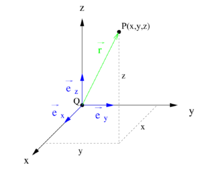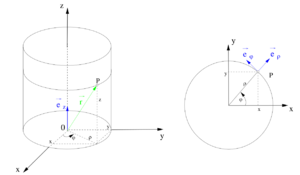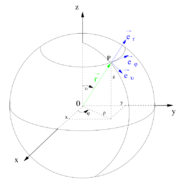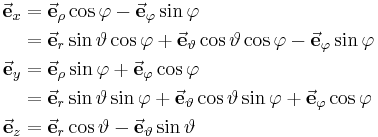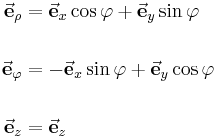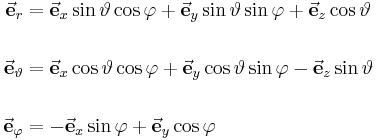Formelsammlung Koordinatensysteme
Aus GET A
|
Wertebereiche der Koordinaten |
|
|
|
|
|
|
| |
|
|
|
| |
|
Zusammenhang zu kartesischen Koordinaten |
|
| |
| Umrechnungen |
|
|
|
| Ortsvektor |
|
|
|
| Betrag des Ortsvektors |
|
|
|
| vektorielles Wegelement |
|
|
|
| Volumenelement |
|
|
|
| vektorielles Flächenelement |
|
|
|
Literatur
- Manfred Albach, Grundlagen der Elektrotechnik 1: Erfahrungssätze, Bauelemente, Gleichstromschaltungen, 3. Auflage (Pearson Studium, 2011)
